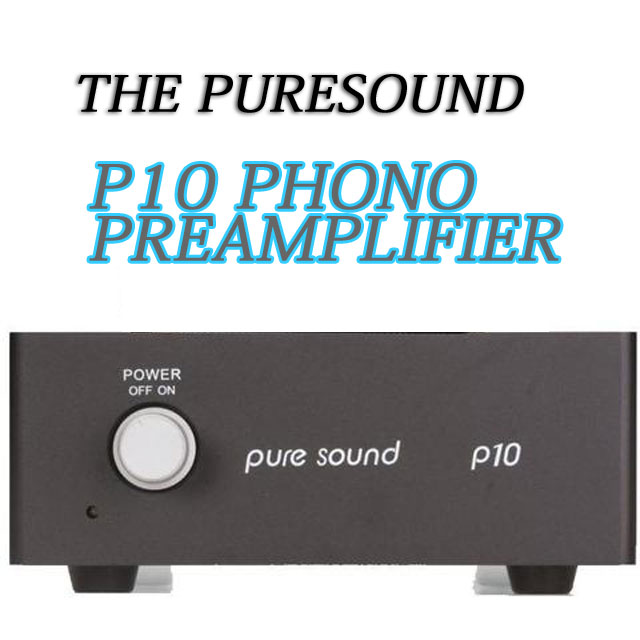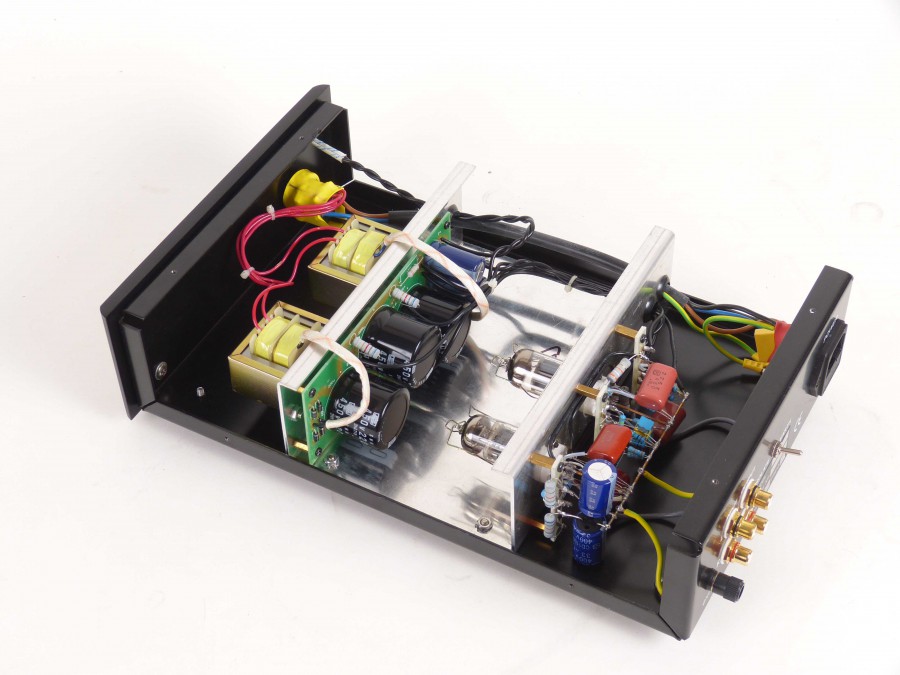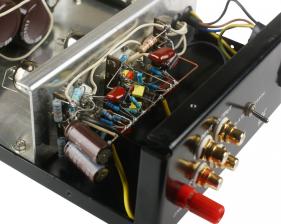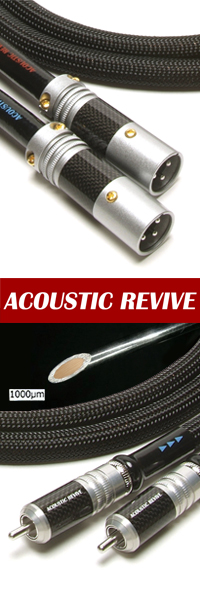puresound P10 Phono Preamplifier

The puresound P10 is an all-tube phono preamplifier designed to work with phono cartridges of medium to high output requiring a 47K Ohm loading impedance. A stand-alone moving-coil transformer is available at extra cost for those who use low-output MC cartridges. Designed by Guy Sargeant, whose design history partly spins out of the Audio Note UK axis, puresound is part of that great UK tradition of extremely high-performance audio products produced at reasonable prices. The puresound line-up includes preamps, integrated amps, and power amps – all incorporating vacuum tube technology. Though designed in the UK, the P10 is manufactured in China. This is reflected in its price, which given the level of performance it achieves, is very reasonable at $1200.


 Physically, the P10 is a long elongated rectangular box of some heft, measuring 3.5 inches high by 8.5 inches wide by 13 inches deep, employing an on/off switch on its front panel, with a soft yellow light to indicate operation. Construction is of the ‘simple-but-effective’ school historically common with UK designs: there is no trace of the pretense to wow the innocent by ‘over-building,’ perversely prevalent in far too many High-End products. A ground ‘lift’ switch on the back panel can aid in some system set-ups, though I never found the need for it. The P10 uses one 12 AX7 and one DJ8 tube. I did not experiment with tube substitution, nor did I try alternative AC cords. What I report is what you get, except for one exception. Since all my systems are completely isolated – from turntable to loudspeakers – I did most of my critical listening of the P10 on the StillPoints isolators.
Physically, the P10 is a long elongated rectangular box of some heft, measuring 3.5 inches high by 8.5 inches wide by 13 inches deep, employing an on/off switch on its front panel, with a soft yellow light to indicate operation. Construction is of the ‘simple-but-effective’ school historically common with UK designs: there is no trace of the pretense to wow the innocent by ‘over-building,’ perversely prevalent in far too many High-End products. A ground ‘lift’ switch on the back panel can aid in some system set-ups, though I never found the need for it. The P10 uses one 12 AX7 and one DJ8 tube. I did not experiment with tube substitution, nor did I try alternative AC cords. What I report is what you get, except for one exception. Since all my systems are completely isolated – from turntable to loudspeakers – I did most of my critical listening of the P10 on the StillPoints isolators.
Burn-in was a non-issue, but I did notice that the P10 tended to sound better after an LP side or so was played in each listening session. But since phono cartridges tend to improve in the same way with play in my cooler than average listening room, I give no great significance to the phenomenon.
 I can no longer count the number of “Golden Ages” that analogue LP playback has gone through since the totalitarian 1984-ish attempt by record companies, corporate media, and audio manufacturers to snuff-out the LP with the CD (and other subsequent digital formats.) It is true that the best of contemporary analogue LP playback quality is simply astonishingly excellent and still serves as the ultimate music reference. The continuing improvement in the quality of moving-magnet, moving-iron, and high-output moving-coil cartridges in the last 20 years has been so stunning that the old paradigm of the low-output moving-coil cartridge ruling the high-resolution roost is no longer true. This is great news for the music lover as it means access to superior playback resolution has gotten significantly more affordable.
I can no longer count the number of “Golden Ages” that analogue LP playback has gone through since the totalitarian 1984-ish attempt by record companies, corporate media, and audio manufacturers to snuff-out the LP with the CD (and other subsequent digital formats.) It is true that the best of contemporary analogue LP playback quality is simply astonishingly excellent and still serves as the ultimate music reference. The continuing improvement in the quality of moving-magnet, moving-iron, and high-output moving-coil cartridges in the last 20 years has been so stunning that the old paradigm of the low-output moving-coil cartridge ruling the high-resolution roost is no longer true. This is great news for the music lover as it means access to superior playback resolution has gotten significantly more affordable.
I have no bias for or against tube or solid state electronics, or the mixing of the two, and have experienced ecstatic listening experiences with all three. But I must admit that when listening to classical music (or any music played with acoustic instruments,) which allows meaningful comparison to, and judging of, playback performance to an absolute sound, good tube gear makes the suspension of disbelief easier. It simply sounds more natural, more timbrally accurate, and more like music than hi-fi.
The P10 proved very unobtrusive when listening. One is simply immersed into the music. Every once in a while, the critical intellect rises. “Hey, this thing is pretty good.” Then, more listening. “Hey this thing is very good!” And then, after extensive listening, “Hey this is exceptionally good!”
Just how good, exactly? It’s hard to say precisely because there is something almost ineffable about the P10 that makes it hard to define. It educes a kind of detail that bypasses most of the common audiophile categorizations by fusing them into a believable gestalt. There is its lack of edge, grain, and harshness, of course. Then there’s its purity of tone (the company isn’t called puresound for nothing.) And then there’s its way with communicating rhythm and timing, along with big dynamics and wide bandwidth. Plus its depiction of subtle dynamics and low-level detail. It is the P10’s ease with extracting all the psychoacoustic fundamentals of sound and music that make it stand out. It just stands there, aloof and unassuming, polishing its fingernails: “What’s the big deal? I just do what a phono preamplifier is supposed to do.”
What is it that a phono preamplifier is supposed to do? Simply, pass all the information the turntable, arm, and phono cartridge is capable of extracting from the record grooves, amplify the tiny cartridge signal, and correct the LP’s frequency-response equalization. Since the analogue LP potentially has infinite resolution, the phono preamp’s job is as important, and probably as difficult, as that of the rest of the front end.
 I played a variety of turntables, arms, and cartridges through the P10, focusing on a Merrill acrylic sub-chassised Acoustic Research XA turntable, an Origin Live Aurora MKII with their upgrade transformer, and the Aurora Gold MKI, also with Origin Live’s upgrade transformer. Tonearms were the Origin Live modified Rega RB 300 (on the AR,) Origin Live Onyx, Zephyr, Conqueror II, and modified RB250. Cartridges included the Nagaoka MP500, Cartridge Man MusicMaker III and Classic, LP Gear BIN 323, Shure V-15 V xMR, Sumiko Blue Point Special with Garrott Bros. micro-line stylus replacement, and Audio Technica AT OC9ML and ML III. (These latter two were used with Graham Slee’s Elevator MC gain stage.) Loudspeaker reference was the Sound Lab electrostatic-dynamic DynaStat.
I played a variety of turntables, arms, and cartridges through the P10, focusing on a Merrill acrylic sub-chassised Acoustic Research XA turntable, an Origin Live Aurora MKII with their upgrade transformer, and the Aurora Gold MKI, also with Origin Live’s upgrade transformer. Tonearms were the Origin Live modified Rega RB 300 (on the AR,) Origin Live Onyx, Zephyr, Conqueror II, and modified RB250. Cartridges included the Nagaoka MP500, Cartridge Man MusicMaker III and Classic, LP Gear BIN 323, Shure V-15 V xMR, Sumiko Blue Point Special with Garrott Bros. micro-line stylus replacement, and Audio Technica AT OC9ML and ML III. (These latter two were used with Graham Slee’s Elevator MC gain stage.) Loudspeaker reference was the Sound Lab electrostatic-dynamic DynaStat.
The P10 was exemplary in revealing the sonic signature of each front-end. Moreover, it did this without exaggerating its limitations. It possesses that near-magical Goldilocks-ian ability to sound ‘just right.’ So, for example, while the slight ringing of the Origin Live-modified Rega RB300 tonearm compared to their modification of the Rega RB250 (attributed by OL’s head Mark Baker to the RB 300’s spring-loaded VTF set-up,) was clearly audible, it did not impinge on musical performance and certainly wasn’t spot-lit to the point of distraction.
Similarly, the difference between the phono cartridges was a snap to perceive, but it was their merits that dominated perception. This ability to reveal the good in preceding components without overly concentrating on flaws is something I’ve encountered previously with many UK audio products. Harbeth, Spendor, and classic Celestion speakers come quickly to mind. It’s a very seductive and welcome attribute because it allows one to turn off the sonic analytic mind and to focus exclusively on the music.
I used the P10 in an all-tube (PrimaLuna) as well was an all-solid-state electronics (Meitner) system and found that it kept its identity and integrity through both. This bodes well for those hesitant to try a tube phono stage for fear of compromising a solid state-based system by adding stereotyped ‘vintage’ tube limitations. The P10 does not soften the bass, roll-off the top-end, nor add euphonically-altered mid-range coloration. Nor does it hiss or hum, as I found no noise audible even in my very quiet (40 dB background-noise level) listening room.
The positive attributes of high-performance tube gear were in great and ready evidence. Speed, in both transient attack and decay, sudden large dynamic shifts, subtlety in lower level dynamic shading, timbral accuracy on acoustic instruments, and the obvious acoustic ambience of recording venues were all there. All these attributes combined to produce listening comprehension and musical communication of the very highest order. I can think of no tube phono stage anywhere near the P10’s price that outperforms it sonically or musically.
So, high praise indeed and the heartiest of recommendations for the puresound P10. I found it so deeply appealing and intensely satisfying that I purchased one.

![]()
paul szabady
US Distributor
Jeffrey Catalano
High Water Sound LLC
274 Water Street 2F
New York, New York 10038
Tel: (212) 608 8841
Website: www.highwatersound.com
Stereo Times Masthead
Publisher/Founder
Clement Perry
Editor
Dave Thomas
Senior Editors
Frank Alles, Mike Girardi, Russell Lichter, Terry London, Moreno Mitchell, Paul Szabady, Bill Wells, Mike Wright, and Stephen Yan,
Current Contributors
David Abramson, Tim Barrall, Dave Allison, Ron Cook, Lewis Dardick, John Hoffman, Dan Secula, Don Shaulis, Greg Simmons, Eric Teh, Greg Voth, Richard Willie, Ed Van Winkle, Rob Dockery, Richard Doron, and Daveed Turek
Site Management Clement Perry
Ad Designer: Martin Perry






Be the first to comment on: puresound P10 Phono Preamplifier